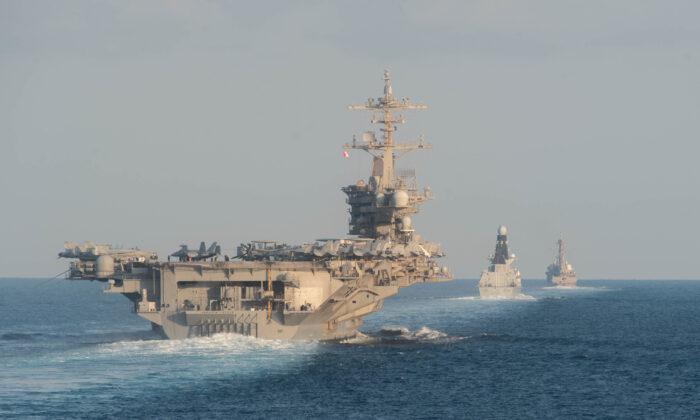A U.S. nuclear-powered aircraft carrier group is conducting operations in the Sea of Japan, officials said Tuesday, amid fears of new missile launches by North Korea in anticipation of Pyongyang’s upcoming national event.
U.S. officials claimed that the USS Abraham Lincoln strike group is conducting operations with the Japanese forces in the Sea of Japan, also known as the East Sea, to reassure allies and partners of the U.S. commitment to maintaining stability in the region.
South Korea’s Defense Ministry said it was aware that the carrier group is in international waters but declined to comment because it is a U.S. military asset.
This is the first deployment of a carrier group to the waters between South Korea and Japan since 2017. That year the USS Ronald Reagan, Theodore Roosevelt, and Nimitz, and their multi-ship strike groups, deployed in a show of force over North Korea’s missile and nuclear weapons tests.
The warship deployment came amid speculation that Pyongyang could engage in a provocative act and conduct nuclear tests in anticipation of the country’s late founding leader Kim Il-Sung’s birthday on April 15.
South Korea’s policy consultation delegation, led by representative Park Jin, met with Deputy Secretary of State Wendy Sherman in Washington on April 4 for talks on the countries’ bilateral alliance.
“[We] relayed the president-elect’s wish for South Korea and the U.S. to further upgrade the South Korea–U.S. alliance into a comprehensive and strategic alliance and formed a consensus [with Washington],” Park told YNA.
Park noted that both sides agreed on the need to maintain deterrence to counter North Korea’s provocative acts.
“To this end, the countries agreed on the need to strengthen the extended deterrence between South Korea and the U.S. and the importance of reactivating the Extended Deterrence Strategy and Consultation Group that has failed to play its role over the past few years,” he added.





